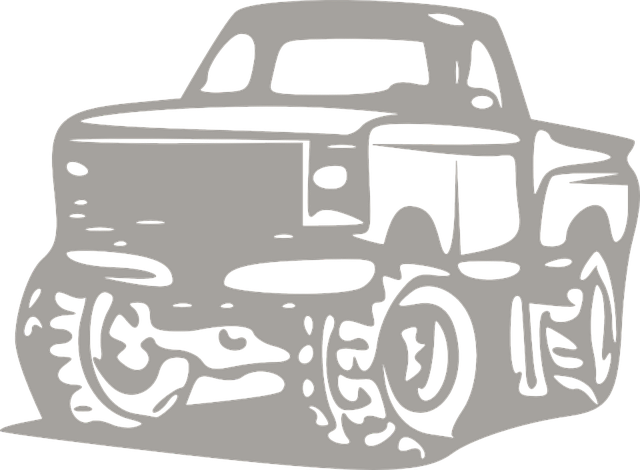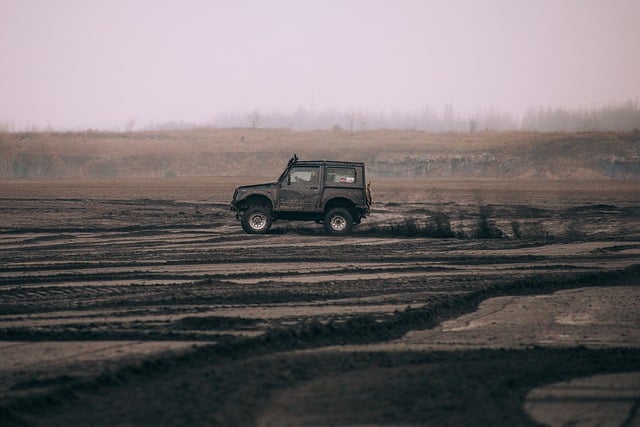McAllen's emergency preparedness is strengthened by well-designed recovery lines, or escape routes, which ensure swift and safe evacuations for all occupants, including those with disabilities. The city, known for its diverse attractions like the McAllen Art Museum and Downtown McAllen's vibrant culture, relies on robust infrastructure, such as connected critical facilities, reliable transportation, and modern communication systems, to facilitate efficient disaster recovery. Community engagement, including initiatives that foster open dialogue about substance use disorder treatment, plays a crucial role in successful recovery. As McAllen grows, it embraces green infrastructure and smart city technologies to enhance resilience and sustainability, ensuring the top parts of the city remain prepared for future disasters with advanced warning systems and data analytics.
In the dynamic landscape of urban recovery, understanding critical infrastructure like recovery lines is paramount. This article delves into the multifaceted world of these vital connections, exploring their role in resilient communities, particularly in the context of top parts in McAllen, Texas. From defining and purposes to the impact of infrastructure and community engagement, we unravel the key elements contributing to successful recovery line implementation. Additionally, we gaze into future trends, highlighting innovations enhancing urban recovery.
- Understanding Recovery Lines: Definition and Purpose
- Top Parts in McAllen: A Geographic Perspective
- The Role of Infrastructure in Efficient Recovery
- Community Engagement and Recovery Line Success Stories
- Future Trends: Enhancing Recovery Lines in Urban Settings
Understanding Recovery Lines: Definition and Purpose

Recovery lines, also known as recovery ways or escape routes, are designed to ensure safety and facilitate efficient evacuation in various settings, from homes and businesses to public spaces and institutions. In the context of McAllen’s top parts, these lines are a critical component of emergency preparedness. They serve as alternative paths that allow occupants to swiftly exit buildings during emergencies, such as fires or natural disasters, ensuring minimal chaos and maximizing survival chances.
The primary purpose of recovery lines is to provide multiple, well-defined routes for occupants to reach safety without congestion or panic. This includes clear signage, unobstructed passageways, and the avoidance of dead ends or confusing layouts. In McAllen’s top parts, where buildings often feature complex floor plans, implementing these lines is crucial for effective evacuation. It ensures that everyone, including those with disabilities or limited mobility, can exit promptly, contributing to overall public safety and order during crises.
Top Parts in McAllen: A Geographic Perspective

McAllen, a vibrant city in South Texas, offers a diverse range of attractions and landmarks that cater to various interests. From cultural hubs to natural wonders, the geographic landscape is a treasure trove for exploration. For those seeking the top parts in McAllen, several iconic locations stand out. The city’s rich cultural heritage is on full display at the McAllen Art Museum, where visitors can appreciate local and international art exhibits.
The McAllen Nature Center is another must-visit destination, providing a peaceful escape into nature with its lush gardens, walking trails, and educational programs. The center serves as a hub for outdoor enthusiasts and nature lovers, showcasing the region’s unique flora and fauna. Additionally, downtown McAllen boasts a vibrant atmosphere, featuring historic architecture, trendy restaurants, and lively entertainment venues. These top parts in McAllen offer visitors a well-rounded experience, blending culture, nature, and urban excitement.
The Role of Infrastructure in Efficient Recovery

In the event of a disaster or emergency, efficient recovery relies heavily on robust infrastructure. The top parts in McAllen, such as critical facilities like hospitals and shelters, must be easily accessible and well-connected to ensure swift response and support during recovery efforts. A reliable transportation network, including highways and public transit systems, facilitates the movement of resources, aid workers, and affected individuals.
Additionally, modern communication infrastructure plays a pivotal role in coordinating rescue operations. High-speed internet connectivity and mobile networks enable real-time information sharing among emergency services, local authorities, and citizens. This seamless flow of data helps in quick decision-making, resource allocation, and updating the public about recovery progress, enhancing overall efficiency in McAllen’s post-disaster landscape.
Community Engagement and Recovery Line Success Stories

Community engagement plays a pivotal role in the success of recovery lines, especially in prominent areas like the top parts of McAllen. When individuals and organizations come together to support those in need of substance use disorder treatment, remarkable outcomes can be achieved. Local initiatives, such as community meetings and awareness campaigns, help dispel stigmas associated with addiction while encouraging open conversations. These efforts foster a supportive environment where those struggling can feel comfortable reaching out for help without fear of judgment.
Success stories from McAllen’s recovery lines often highlight the power of this collective action. Many individuals have shared their journeys, testifying to how community support facilitated their transition into long-term recovery. These narratives not only inspire hope but also emphasize the importance of building strong, interconnected communities that prioritize mental health and wellness. By embracing these stories, the top parts of McAllen can continue to drive positive change, ensuring that those in need have access to the resources and networks necessary for a brighter future.
Future Trends: Enhancing Recovery Lines in Urban Settings

As cities like McAllen continue to grow and evolve, so do the challenges and opportunities in urban recovery lines. Future trends in recovery lines focus on enhancing resilience and sustainability in dense, urban settings. One prominent trend is the integration of green infrastructure, such as permeable surfaces, green roofs, and urban forests, which not only mitigate flooding but also provide cooling effects and improve air quality. These eco-friendly solutions are increasingly recognized as essential components of resilient urban landscapes.
Additionally, advanced technologies play a pivotal role in future recovery lines. Smart city initiatives, including real-time data analytics and predictive modeling, enable more efficient disaster management and faster response times. For instance, sensors can monitor water levels and ground movement, providing early warnings for potential flooding events. This technological advancement ensures that McAllen’s top parts remain prepared and equipped to handle future storms and natural disasters, enhancing the overall resilience of the city.
In conclusion, recovery lines play a pivotal role in urban resilience, particularly in dynamic locations like McAllen. By understanding their definition and purpose, leveraging infrastructure effectively, engaging communities, and embracing future trends, we can enhance these lines to foster more robust and sustainable cities. The success stories shared highlight the power of collaboration, while exploring future enhancements ensures that top parts in McAllen—and similar urban settings worldwide—are better equipped to navigate and recover from disasters.



